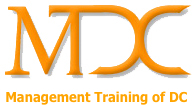Marketing Management; MGT 345
The Catholic University of America
Study Guide for MGT 345 Marketing Management
This course is a study of managerial policies, strategies, and decisions with respect to products and/or services offered by a firm. Major variables, both internal and external to the firm, will be presented which mutually interact and influence decisions, pricing, promotions, and distribution. Additional topics include market analysis, new product development, and implementation of marketing programs.
Define the role of marketing in organizations.
List the elements of the marketing mix.
Describe how marketers create value for a product or service.
Understand why marketing is important both inside and outside the firm.
Define a marketing strategy.
Describe the elements of a marketing plan.
Analyze a marketing situation using SWOT analyses.
Describe how a firm chooses which consumer group(s) to pursue with its marketing efforts.
Outline the implementation of the marketing mix as a means to increase customer value.
Summarize portfolio analysis and its use to evaluate marketing performance.
Describe how firms grow their business.
Identify the ethical values marketers should embrace.
Distinguish between ethics and social responsibility.
Identify the four steps in ethical decision making.
Describe how ethics can be integrated into a firm’s marketing strategy.
Describe the ways in which corporate social responsibility programs help various stakeholders.
Outline how customers, the company, competitors, and corporate partners affect the marketing strategy.
Explain why marketers must consider their macroenvironment when they make decisions.
Describe the differences among the various generational cohorts.
Identify important social trends.
Articulate the steps in the consumer buying process.
Describe the difference between functional and psychological needs.
Describe factors that affect information search.
Discuss postpurchase outcomes.
List the factors that affect the consumer decision process.
Describe how involvement influences the consumer decision process.
Describe the different types of buyers and sellers that participate in business-to-business (B2B) markets.
List the steps in the B2B buying process.
Identify the different roles within the buying center.
Describe the different types of organizational cultures.
Detail different buying situations
List the factors that aid in the growth of globalization.
Describe the components of a country market assessment.
Identify the various market entry strategies.
Highlight the similarities and differences between a domestic marketing strategy and a global marketing strategy.
Identify the five steps in the segmentation, targeting, and positioning process.
Outline the different methods of segmenting a market.
Describe how firms determine whether a segment is attractive and therefore worth pursuing.
Articulate the difference among targeting strategies: undifferentiated, differentiated, concentrated, or micromarketing.
Define positioning, and describe how firms do it.
Identify the five steps in the marketing research process
Summarize the differences between secondary data and primary data.
Describe the various internal and external secondary data sources.
Describe the various primary data collection techniques.
Examine the circumstances under which collecting information on consumers is ethical.
Describe the components of a product.
Identify the types of consumer products.
Explain the difference between a product mix’s breadth and a product line’s depth.
Identify the advantages that brands provide firms and consumers.
Explain the various components of brand equity.
Determine the various types of branding strategies used by firms.
Distinguish between brand extension and line extension.
Indicate the advantages of a product’s packaging and labeling strategy.
Identify the reasons firms innovate.
Describe the different groups of adopters articulated by the diffusion of innovation theory.
Identify the factors that determine how fast innovation diffuses.
Explain the stages involved in developing a new product or service.
Describe the various product life cycle concepts.
Describe how the marketing of services differs from the marketing of products.
Discuss the four gaps in the Service Gaps Model.
Examine the five service quality dimensions.
Explain the zone of tolerance concept.
Identify three service recovery strategies.
List the four pricing orientations.
Explain the relationship between price and quantity sold.
Explain price elasticity.
Describe how to calculate a product’s break-even point.
Indicate the four types of price competitive levels.
Describe the difference between an everyday low price strategy (EDLP) and a high/low pricing strategy.
Explain the difference between a market penetration pricing strategy and a price skimming pricing strategy.
List pricing strategies that have the potential to deceive customers
Define supply chain management.
Recognize the value added by the supply chain.
Describe the flow of merchandise and the flow of information in the supply chain.
Describe how supply chains are managed.
Discuss the four factors manufacturers should consider as they develop their strategy for working with retailers.
Outline the considerations associated with choosing retail partners.
List the three levels of distribution intensity.
Describe the various types of retailers.
Describe the components of a retail strategy.
Identify the benefits of stores.
Identify the benefits of multichannel retailing.
Detail the challenges of multichannel retailing.
Identify the components of the communication process.
Explain the four steps in the AIDA model.
Describe the various integrative communication channels.
Explain the various ways used to allocate the IMC budget.
Identify marketing metrics used to measure integrated marketing communications (IMC) success.
Describe the steps in designing and executing an advertising campaign.
Identify three objectives of advertising.
Describe the different ways that advertisers appeal to consumers.
Identify the various types of media.
Identify agencies that regulate advertising.
Describe the elements of a public relations toolkit.
Identify the various types of sales promotions.
Describe the value added of personal selling.
Define the steps in the personal selling process.
Describe the key functions involved in managing a sales force.
Describe the ethical and legal issues in personal selling.

Recent Comments